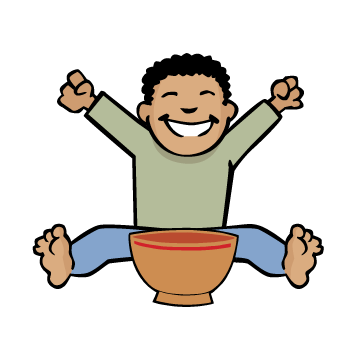Boston Children's Museum
308 Congress Street, Boston, MA 02210
617-426-6500
© Boston Children’s Museum 2025
Website Design by JackrabbitThis activity introduces students to The Bowl Game, or “hubbub”, a traditional game played by the Wampanoag and other Native people all across America. In the Northeast United States, the game is sometimes called hubbub because early European settlers who witnessed it being played reported hearing players say “hub, hub, hub” over and over to distract and intimidate the other team. Try all of the winter thanksgiving activities, and you and your students can share in Wampanoag traditions and give thanks to the animals!
Hubbub can be played with any relatively flat 2-sided objects for the game pieces (pennies, buttons, small washers) or you can make your own from natural objects such as peach pits, nectarine pits or unshelled almonds. These game pieces are called “dice”. Before playing, the dice need to be decorated so that one side looks different from the other. Students can use markers, paint, masking tape with symbols, etc. Just be sure that they decorate the dice on only one side.
To keep score, players use “counting sticks”. Straws are great as counting sticks, but you can also use craft sticks (which won’t roll away), pencils, skewers, etc.

Ask your students if there are any games that their families play. Are there any games that their parents taught them, that they used to play when they were children? What kinds of games do your students think kids played 10 years ago? 50 years ago? 100 years ago? In this activity, kids will learn a game called “hubbub”, or “The Bowl Game”, that has been played for hundreds of years by Native American children all around the United States and is still played today.
Make and play your own Hubbub game.
How to Play:
Students can either play this game in a bowl, or shake the dice in their hands and then toss them on a flat surface for scoring. Play can be between 2 children or 2 teams with members of each team taking turns. Put 5 dice in the bowl with all designs or all blanks facing up, and place the bowl on the ground or table between the 2 players. The counting sticks go beside the bowl. As long as a player scores, it is his or her turn. When she or he does not score, the other player takes a turn. If dice flip out of the bowl, start that turn again.
The score is kept with the counting sticks—each stick equals 1 point. When the game begins, there is a central pile of sticks. As players score, they remove the sticks they win from the pile and add them to their own pile. When there are no more sticks in the center, players count their sticks to determine the winner.
Scoring:
If all the blanks or all the designs come up = 3 points or counting sticks
If 4 match and 1 is different = 1 point or stick
If 2 or 3 match = 0 points
Part of the fun and the challenge of hubbub is to see if players can distract their opponents during their turn by making noise. Annawon Weeden, who played this game as a child suggests that opponents crow loudly while the opposition takes its turns.
After each team has played once, gather your students together to talk about what they have discovered. Have they gotten comfortable with the point system? What ideas do they have for distracting their opponents? Do they play other games in which it is OK to purposefully distract each other?
Have them return to playing the game. After playing a few times, they can switch partners if they would like to try playing with someone else.